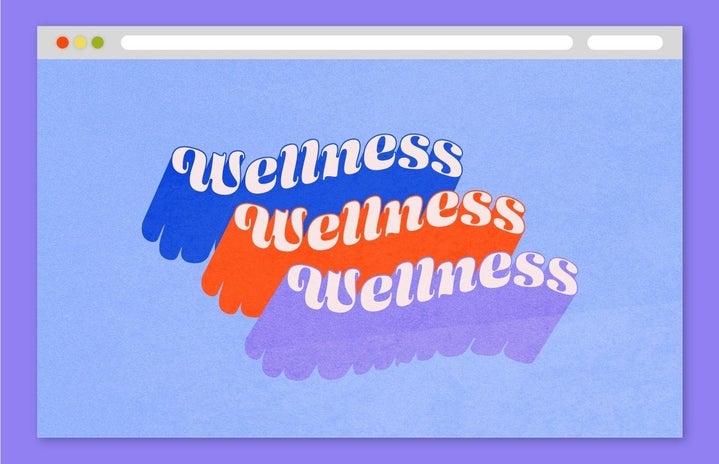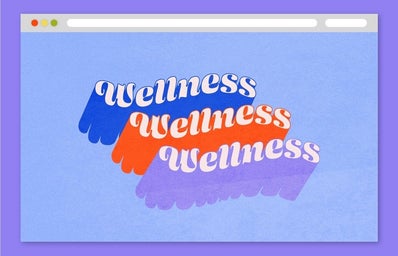Ayurveda is an ancient medicinal system that hails from India. This healing system balances elements like the body, mind and environment to heal illnesses. It is an incredibly complex field with various concepts. It takes five years and six months to obtain a bachelor’s in this field and become an Ayurvedic doctor. Here at Her Campus Ryerson, we would like to ease your transition into understanding more about this miraculous system of healing. So, let’s go through some simple Ayurvedic practices that you can incorporate into your life for overall wellness and beauty. This year is a time for self-care and improvement, and these tips will help you in your journey to obtaining better health!
Oil Pulling (Gandusha Kriya)
Oil pulling is when you use cold-pressed oils to clean your mouth and get rid of toxins in the body. This is done in the morning before any food is consumed. I know it sounds a little icky but trust me, this practice is worth it! Oil pulling aids your oral health by stopping the formation of cavities and gum disease. Routinely practicing oil pulling for ten minutes a day has even shown to lessen the number of Streptococcus mutans (a bacteria that contributes to tooth decay) within the saliva. This practice will help you achieve better oral hygiene and aid your beautiful smile.
What you will need: An oil of your choice (coconut oil and sesame seed oil are the most commonly used oils for this practice) and a tablespoon.
Start by placing a tablespoon of the oil in your mouth. Then rotate the oil back and forth, ensuring that you don’t ingest the content. This process of oil pulling should take you 10-20 minutes. If you are new to this practice, you may want to consider starting slow with a good 5 minutes and working your way up. Next, follow the oil pulling with your regular oral hygiene routine of brushing, flossing and mouthwash.
Pranayama
While the world seems to be captivated with mediation and sun salutations, Pranayama remains relatively underrated. Pranayama translates to “life energy control” and this procedure requires you to consciously control your breathing patterns.
Performing Pranayama has several advantages for both the mind and body. Pranayama decreases stress levels, reduces high blood pressure and improves one’s quality of sleep. A 2012 study even showed the link between practicing Pranayama and reducing withdrawal symptoms for smokers. What’s excellent about Pranayama is that it is relatively easy to follow. It also has varying forms that you can experiment with. There is Sheetali, Kapalabhati, Bhastrika, Ujjayi and many more forms of Pranayama. There are several tutorials readily available for you on YouTube, so you can follow along and try this practice.
Dry Brushing (Garshana)
You might be familiar with this practice as it has been gaining a lot of buzz among the beauty community. Dry brushing is the process of exfoliating the skin when it’s completely dry using natural fibre tools. Influencers have been using this technique to reduce the appearance of cellulite and prevent ingrown hair. In addition to keeping your skin healthy, dry brushing also stimulates the lymphatic system and improves blood flow. Dry brushing 1-2 times every week is sufficient to reap the benefits of the ritual. This trend is here to stay and is simple to do.
What you will need: A stiff, natural bristle brush (these brushes are available all over the internet and also in health stores).
Grab your clean brush and start working on your feet progressively moving upwards. You want to make sure that you are brushing in circular clockwise strokes. This ritual is about listening to your body and altering the pressure throughout the process according to your preference. It is also important to note that you should brush in upward strokes when dealing with your armpits. When you’re done with dry brushing, you can finish your routine with a relaxing shower.
Abhyanga
Abhyanga is a “self-massage” done with hot oil to promote blood circulation and relax the body. Like dry-brushing, it is a self-care ritual performed before bathing. It works to lubricate the joints, which helps get rid of pain and discomfort. It is advised to do Abhyanga 3-4 times a week. Be sure not to perform this massage when you are ill. It is also crucial that you wait at least two hours after eating so that the massage doesn’t disrupt your digestion and lead to further complications.
What you will need: An oil of your choice (this massage is traditionally performed using sesame or coconut oil) and a vessel to heat the oil in.
Start by heating oil in a vessel until the oil is warm (this can be done using the microwave or the double boiling method). The quantity of oil will differ from person to person, but the standard measurement is 1/2 cup. Once you have your heated oil, you can begin by rubbing the oil on your head, moving downwards to your feet. To perform this massage, you should use circular motions. Make sure to pay attention to all parts of your body, attending to any aches you feel. Once you have completed your massage, you can sit back and relax as the oil penetrates your skin. Let the warm oil seep into your skin for 10-15 minutes. Then you can hop into the shower and wash your body with a mild cleanser.
Tongue Scraping (Jihwa Prakshalana)
Tongue scraping involves cleaning the surface layer of your tongue using a piece of special hygiene equipment. Your tongue is a breeding ground for bacteria – thus cleaning it properly is of utmost importance. Ayurveda has been promoting tongue cleaning for centuries, and professionals have validated this practice. These trials have shown that tongue scraping is a great approach to clean the tongue and can help with bad breath. This daily habit is even shown to increase your tasting abilities.
What you will need: A tongue scraper (Ayurveda recommends a copper tongue scraper, which is conveniently long-lasting and reasonably cheap).
Start by placing the hygiene device on the base of your tongue and then gently pull forward, removing all the gunk. As you repeat this step, make sure to rinse the tongue scraper with water to remove any accumulated substance. Once you go over your entire tongue with this device, you can gargle with water. Make sure to clean your tongue scraping device regularly to avoid any build-up.

